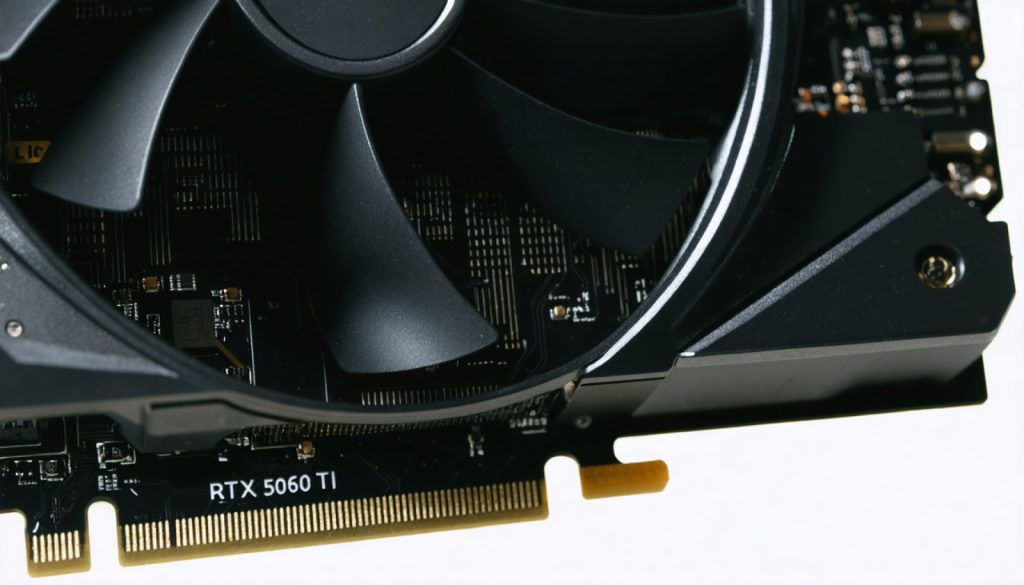
- The Nvidia RTX 5060 Ti GPU promises advanced gaming graphics with PCIe 5.0 technology, enhancing performance capabilities.
- While offering cutting-edge features, the new GPU poses challenges for users with older PCIe 4.0 motherboards, potentially limiting its benefits.
- Upgrading to the RTX 5060 Ti might require additional investments, such as a new motherboard, complicating cost-benefit analyses for gamers.
- Factors like inflation, supply constraints, and scalping exacerbate budget concerns, threatening the affordability of new gaming tech.
- Gamers must navigate evolving market dynamics and weigh the value of high-performance GPUs versus older generation alternatives.
- As Nvidia advances graphical performance, the broader tech industry faces the challenge of aligning innovation with accessibility and necessity.
Behold the future of gaming graphics: tantalizing, potent, and—potentially—out of reach for many gamers. Nvidia’s anticipated RTX 5060 Ti GPU has surfaced in leaked images, revealing not just the next step in graphical prowess but also hinting at a crucial decision gamers may soon face. With third-party manufacturers like MSI already showcasing models equipped with PCIe 5.0 interfaces and a choice between 16-pin and 8-pin power connectors, the excitement is palpable, yet it serves as a gentle reminder of the rapid pace of technology.
These new GPUs promise exceptional performance, leveraging the increased bandwidth of PCIe 5.0. However, for the legion of aficionados still utilizing PCIe 4.0 motherboards, this new technology poses a perplexing challenge. Despite the benefits of this cutting-edge advancement, the lower PCIe versions may bottleneck performance, particularly for lower-end cards like the RTX 5060 Ti, potentially resulting in diminished capabilities.
Imagine this: the shimmering potential of an RTX 5060 Ti in your rig promises smoother gameplay, lightning-fast frame rates, and photorealistic graphics. However, called into question is whether the investment in this new tech outweighs the benefits if a motherboard upgrade becomes mandatory. Enthusiasts are left pondering whether securing a high-end GPU from previous generations might deliver better value than plunging headlong into the newest line with accompanying costs.
It is crucial to reflect on the mounting pressures in the gaming world today. Inflation, global supply constraints, and an avalanche of scalpers conspire to make the very idea of “budget gaming” elusive. In an environment where affordability is constantly being tested, these components that were once within the realm of possibility now seem to drift beyond the grasp of many aspiring builders.
The release of RTX 5060 Ti could redefine gaming experiences if one has the resources to harness its power fully. This technological evolution holds promise, yet it demands carefully measured decisions. Gamers must weigh their aspirations against rapidly shifting market dynamics—a theme increasingly pervasive in the tech industry.
Our takeaway? As Nvidia pushes the boundaries of graphical performance, perhaps the industry itself must confront its pacing. For now, gamers from every corner must carefully evaluate their choices amidst a landscape where shiny, new advancements can obscure the increasingly blurred lines of feasibility and necessity.
The Ultimate Guide to Navigating the GPU Evolution: Is the Nvidia RTX 5060 Ti Worth the Investment?
As gaming technology continues to advance at lightning speed, Nvidia’s upcoming RTX 5060 Ti GPU is poised to make a significant impact on the gaming landscape. However, with high performance comes the question of affordability and compatibility for many gamers. Let’s take a deeper dive into this exciting new technology and explore whether it is a worthwhile investment.
New Features and Specifications
– PCIe 5.0 Interface: The RTX 5060 Ti features the latest PCIe 5.0 interface, providing substantially increased bandwidth over PCIe 4.0. This advancement can lead to improved data transfer rates and potentially better gaming performance.
– Power Options: The availability of both 16-pin and 8-pin power connectors on models like those from MSI may suit different power supply setups—but will require careful consideration to ensure compatibility with existing systems.
Compatibility and Performance Concerns
– Potential Bottlenecks: If you’re using a motherboard based on PCIe 4.0, be aware that you might not be able to fully utilize the RTX 5060 Ti’s capabilities. While it will function, peak performance might be hindered, especially for lower-end cards designed with PCIe 5.0 in mind.
– Future-Proofing Your Setup: Upgrading your motherboard to support PCIe 5.0 could enable you to harness the full potential of this new GPU, but it requires a significant additional investment.
Real-World Use Cases and Market Trends
– Gaming Performance: Expect smoother gameplay and enhanced graphics, key draws for enthusiasts who wish to experience widely anticipated games at top-quality settings.
– VR and High-Resolution Displays: The RTX 5060 Ti offers potential improvements for VR applications and high-resolution displays, making it appealing for gamers looking to future-proof their systems against yet-to-be-released tech innovations.
Industry Forecasts and Pricing Trends
– Inflation and Scarcity: As global supply chains face constraints, expect possible price surges or limited availability upon release. Scalpers might also have a hand in increasing costs, so early adoption should be approached with caution.
– Historical Pricing Factors: Historically, Nvidia’s XX60 series GPUs have been the entry point for affordable high performance. However, recent trends suggest that newer models could start at higher price points.
Pros and Cons Overview
Pros:
– Latest technology with PCIe 5.0 support.
– High performance in gaming and VR applications.
– Options for different power supply configurations.
Cons:
– Potential compatibility issues with older motherboards.
– Higher cost due to advanced technology.
– Uncertainties regarding real-world price and availability.
Tips and Recommendations
– Assess Your Needs: Before investing, clarify your gaming requirements and whether you plan to use PCIe 5.0. This decision could significantly impact your overall experience with the RTX 5060 Ti.
– Consider Alternatives: Look into previous generations of GPUs if budget is a primary concern. They might offer better value if cutting-edge features aren’t essential for your setup.
– Monitor Market Trends: Keeping an eye on pricing trends and potential sales could help in securing your GPU at a more affordable rate.
For more information on gaming tools and hardware, check out Nvidia. Balancing aspirations with financial and technical feasibility remains a core challenge in today’s rapidly evolving tech landscape. Be an informed consumer to make the best choice for your gaming setup.



